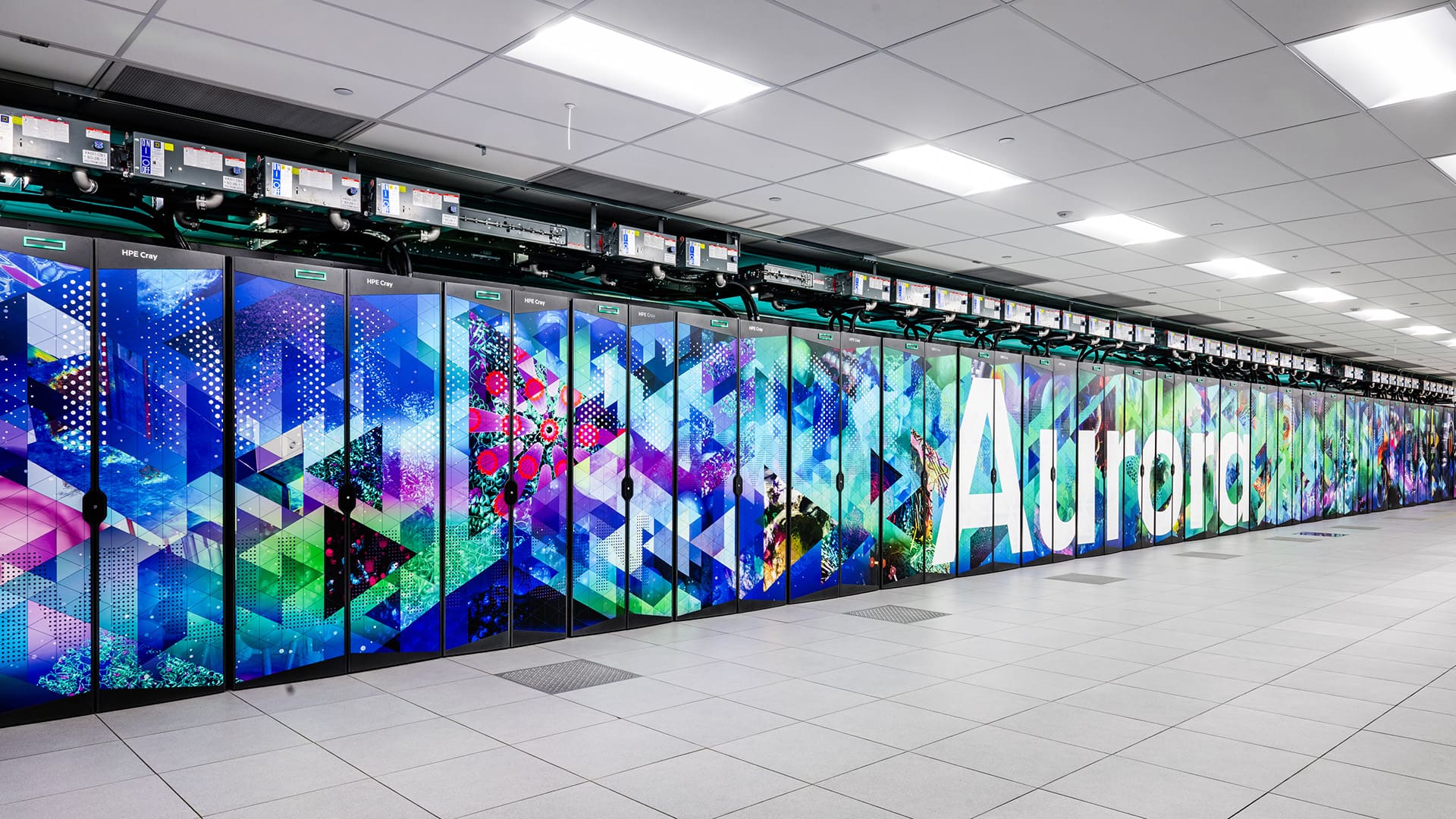The developed machine, in collaboration with the Argonne National Laboratory, reaches two exaflops and becomes a symbol of innovation, collaboration, and resilience.
In a milestone that redefines the boundaries of computing, Intel and Argonne National Laboratory have officially unveiled the Aurora supercomputer, an exascale system capable of performing over two quadrillion operations per second. Behind this technical feat lies more than a decade of work, unforeseen challenges, and an unprecedented collaboration that has transformed both the technology and the people who made it possible.
From a powered rack to the exascale leap
The first sign of life in one of the production blades at Intel’s JF5 lab in Oregon was described by Olivier Franza — the system’s chief architect — as “more than hardware turning on: it was the first glimpse of a historic machine.” Aurora is not just a pile of silicon and cables; it’s a platform for scientific discovery that’s already being used for pioneering research in climate modeling, cancer research, and quantum physics.
The system is part of initiatives like the Trillion Parameter Consortium, where large-scale AI models such as AuroraGPT are developed to accelerate scientific discovery in collaboration with national laboratories.
An unprecedented technical and human challenge
Building a supercomputer of this caliber was an unprecedented challenge for Intel. “We had never undertaken a project of this magnitude,” Franza admits. From key architectural decisions to integrating high-bandwidth memory and advanced accelerators, each step was a test.
There were additional difficulties, such as supply chain disruptions caused by the COVID-19 pandemic in 2019, thermal issues, and elusive bugs that took months to debug. However, as Bill Wing, Aurora program director at Intel, recalls, “Multidisciplinary teams at Intel worked tirelessly, even for weeks in underground labs in Chicago.”
A barrier-free collaboration
Aurora’s success cannot be explained without the close collaboration with Argonne, which is uncommon in Intel’s traditional approach. Engineers from both organizations refined the system together, shared knowledge, and most importantly, built a relationship based on trust and active listening.
“This wasn’t just about delivering technology; it was about deeply listening to the client,” Wing points out. “No problem was too small; everything was addressed with urgency and humility.”
Cutting-edge technology serving science
Among the most notable technical achievements is the maturation of oneAPI, Intel’s unified toolkit for heterogenous development, which was optimized through feedback from Argonne. The integration of the open storage platform DAOS was also crucial in managing the vast amounts of data Aurora generates.
Aurora is not only a supercomputer but also a platform for AI and high-performance computing designed to impact biology, energy, space exploration, nuclear fusion, and even quantum computing.
Beyond hardware: a cultural transformation
“Building Aurora has transformed us as engineers, leaders, and individuals,” Franza confesses. The journey required not only technical expertise but also a culture of resilience, empathy, and shared leadership. “What kept us united was team spirit and dedication to the client,” he adds.
The project also served as a wake-up call about the importance of prioritizing team well-being in high-pressure initiatives. “Leadership means knowing when to push forward and when to pause to protect the people,” Wing reflects.
A legacy for future generations
Aurora is now operational and ready to drive discoveries that were once impossible. But its greatest legacy may not only be what it does, but how it was built. It’s a testament that when imagination, engineering, and human commitment converge, the impossible ceases to be so.
“This project was an investment in the future,” Wing concludes. “Knowing that our work will inspire and enable breakthroughs for generations is profoundly rewarding.”
via: newsroom.intel.com

